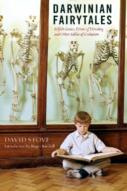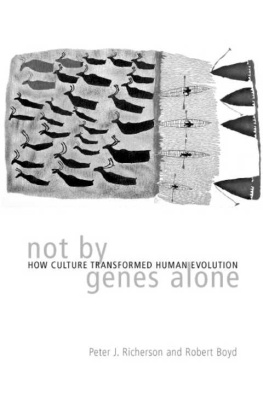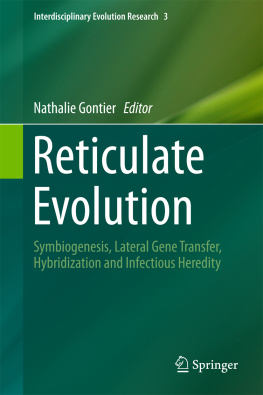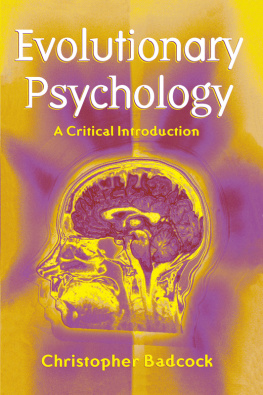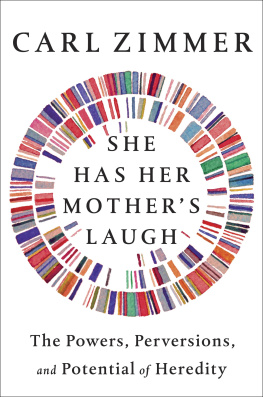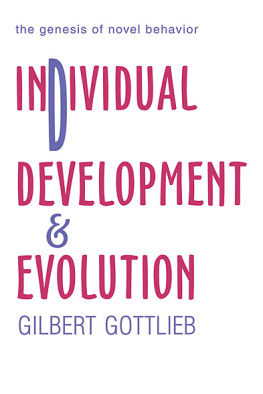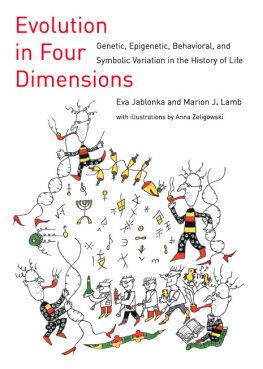EXTENDED
HEREDITY
EXTENDED
HEREDITY
A NEW UNDERSTANDING OF
INHERITANCE AND EVOLUTION
Russell Bonduriansky and Troy Day
PRINCETON UNIVERSITY PRESS
PRINCETON AND OXFORD
Copyright 2018 by Princeton University Press
Published by Princeton University Press,
41 William Street, Princeton, New Jersey 08540
In the United Kingdom: Princeton University Press,
6 Oxford Street, Woodstock, Oxfordshire OX20 1TR
press.princeton.edu
Jacket images courtesy of Shutterstock
All Rights Reserved
Library of Congress Control Number 2017958983
ISBN 978-0-691-15767-2
British Library Cataloging-in-Publication Data is available
This book has been composed in Minion Pro
Printed on acid-free paper.
Printed in the United States of America
10 9 8 7 6 5 4 3 2 1
To our children, Aaron and Amalyn, Willem and Samantha,
who are more than the sum of their genes
CONTENTS
PREFACE
The nature of hereditythat is, how biological information is transmitted across generationsis a question that touches just about every part of the biomedical sciences, from evolutionary biologys quest to account for the diversity of life to medical sciences effort to understand why certain diseases run in families. Its also widely seen as an iconic success story of modern science. From the cautious speculations of the nineteenth century to the establishment of Mendelian genetics in the early twentieth century and the deciphering of the genetic code in the 1960s, the unlocking of the mechanism of heredity is portrayed in textbooks as a journey now essentially completed.
But nature often manages to frustrate our desire for simple answers. Several decades of troubling discoveries that dont fit the established picture of how the world is supposed to work are now leading some scientists to argue that its time to rethink the nature of heredity. If this challenge succeeds, then the biological and medical sciences will be in for a shake-up over the coming years, and even the textbooks will have to be rewritten.
If we were to try to summarize the main thesis of this book in a few words it would be like this: there is more to heredity than DNA sequences (genes), and recognizing this nongenetic dimension of heredity can provide us with new insights into how evolution works, and into many practical concerns of human life as well. Its now clear that a variety of nongenetic factors are transmitted across generations alongside genes. Like genes, such nongenetic factors can convey biological information across generations, confer a resemblance between offspring and their parents, and potentially influence the course of evolution. This plurality of hereditary factors is necessitated by basic properties shared by all cellular life-forms, and we believe that any concept of heredity that is not arbitrarily narrow must encompass this nongenetic dimension. A concept of heredity that encompasses both genetic and nongenetic processes is already emerging, and we will refer to it as extended heredity to differentiate it from the conventional, genocentric view.
The narrow concept of heredity that has prevailed since the early decades of the twentieth century has resulted in the exclusion from the realm of possibility of some very real and important biological phenomena, such as the possibility that an individuals experiences during its lifetime can have predictable consequences for the features of its descendants. Such effects were long dismissed as a chemical impossibility and a violation of the central dogma of molecular biology. Yet, a great variety of such phenomena have now been reported in the scientific literature. This nongenetic side of heredity has been a blind spot for biology and medicine for decades, but the elephant in the room is finally starting to be noticed. For readers who are new to this field, we aim to provide a way to think about these recent developments, place them in historical context, and understand their implications. For those who remain skeptical of such heterodox ideas, we hope to at least bring the issues into sharper focus.
We are not the first to recognize the implications of nongenetic inheritance. In this book, we draw on numerous lines of research by many authors, borrowing from such far-flung areas as cultural inheritance theory, niche construction theory, evolutionary ecology, and molecular and cell biology. Work in all these areas has addressed various aspects of what the classic narrative leaves out. Most importantly, two thought-provoking books by Eva Jablonka and Marion Lamb Epigenetic Inheritance and Evolution (1995) and Evolution in Four Dimensions (2005)have focused squarely on the implications of nongenetic inheritance for evolution. Jablonka and Lambs books and papers paved the way for the recent upsurge in evolutionary research on extended heredity, and crystallized many of the ideas explored by subsequent authors, including ourselves. Yet, while we acknowledge our intellectual debt to Jablonka and Lamb, this book reflects our own perspective, approach, and aims. In particular, building on the conceptual groundwork laid by previous authors, our main objective is to explore how an extended concept of heredity can be incorporated into evolutionary theory and why doing so can provide new insight on a range of evolutionary questions.
We have subdivided this book into ten chapters.
In (Heredity from First Principles), we explain why the classic framework is overly narrow, and why we believe that an extended concept of heredity is necessitated by universal features of cellular life. These chapters introduce ideas that are developed more fully in the rest of the book.
In (The Triumph of the Gene), we explore the development of the modern, genocentric concept of heredity. Although scientists rarely bother to delve into the historical baggage of their discipline, we believe that without understanding the history it is all but impossible to understand current developments in this field. For example, why is it that nongenetic inheritance was so unequivocally rejected by leading twentieth-century biologists? And why are their arguments no longer valid today?
(The Nongenetic Inheritance Spectrum), we show that phenomena that are epigenetic in the strict sense are part of a much broader array of nongenetic inheritance mechanisms that are just as interesting and important.
The next set of chapters explores the implications of extended heredity in more depth. In (A New Perspective on Old Questions), we revisit some of the thorniest puzzles in evolutionary biology and show how the insights provided by extended heredity can allow us to see these questions in a new light.
Finally, in (Extended Heredity in Human Life), we consider the implications of extended heredity for the practical concerns of modern human beings living in a rapidly changing world. We show that, during its heyday in the twentieth century, the narrow, genocentric view of heredity had very tangible and sometimes tragic consequences, and we consider how extended heredity might alter our understanding of our health and society, and our impact on the world around us.
We have endeavored to make this book as accessible as possible in the hope that it will be read not only by practicing biologists but also by students and laypeople who follow biology. While jargon is sometimes unavoidable, we have made an effort to define all technical terms (with some definitions and explanations provided in notes at the back of the book). Where mathematical ideas form an essential part of the story, we have tried to present them in intuitive and pictorial ways. Equations have been kept to a minimum and are mostly consigned to boxes and notes that lay readers can safely skip without losing the bigger plot.



